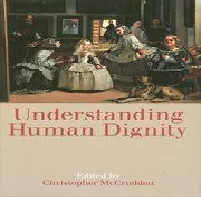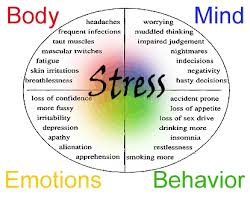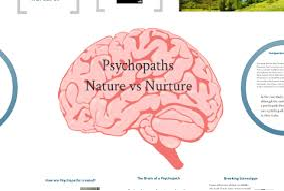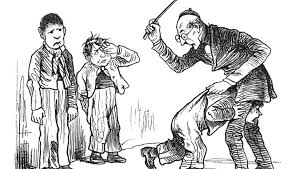
National Mental Health Strategy
Order Instructions:
Please Keep this all Australian, such as references and information.
Use Harvard Referencing, I will add a Manuel of Australian Harvard referencing
This assignment is all about the National Mental Health Strategy. Just like the first and second assignment the writer did for order 114503 and 114550.
Using the Althaus et al (2103) text provide an analysis of your chosen policy using the following headings.
1. What policy instrument/s have been used in the delivery of the policy?
2. How was the consultation carried out / by whom/ with whom?
3. How and with whom has the policy been coordinated?
4. How has the policy been implemented? Were there other implementation choices / strategies and if so what were they?
5. How has the evaluation been carried out and what were the findings / future recommendations?
The paper should be professionally presented and provide a sound structure of analysis throughout.
Provide an introduction to your policy and conclude with the paragraphs on evaluation and future recommendations.
Please only use the above titles.
There should be a minimum of 20 references for this paper
More info.
Policy Analysis Paper 2 50% , 2000 words. Due Monday 31st. October at 9.00am
This assignment will provide a succinct outline of the chosen policy purpose and context and its relation to other existing policies / programs. Students will :
Analyse the policy instruments, consultation and coordination processes
.Discuss implementation choices and strategies
.Discuss evaluation processes.
.Provide a summary of scholarly recommendations
This assignment should provide a sound structure of analysis and professional presentation throughout the paper
SAMPLE ANSWER
Policy Paper 2: National Mental Health Strategy
Introduction
Despite the international recognition of mental health policy implementation, Australian government’s success in delivering population based care is overshadowed by its failure to fully implement the reforms as promised. The Australian government mental health action plan has several potential pitfalls including the unmet needs, met non-needs and resource shortages. These are main issues that are continually being reported in the Australian mental healthcare policy reforms (Bateman & Smith, 2011).
To understand the NMH reform process and its implication to the society, this paper analyzes the policy instruments used to deliver the policy. The paper also explores consultation as well as the coordination processes; discuss the implementation strategies, and evaluation process of the NMH policy. The paper concludes by providing a summary of future recommendations.
Policy instruments used to delivery National Mental Health Strategy
Policy instruments refers to the means or approaches the government has applied to deliver the NMH policy. According to Althaus et al.( 2013), there are four types of policy instruments have been used to achieve the NMH policy ends. These include money, advocacy, use of legislative power and government action. The government operates a federated system that consists of complex division of labor between the Federal, State and Territory government. The federal government is responsible for controlling the funding of the health services whereas the state and territory government main role is to delivery services with additional of few funding and regulatory responsibilities (Health 2015). The tax collection process is arranged in a way that it creates vertical fiscal imbalance. The imbalance makes the federal government to influence the state and local territories during the policy making process by attaching conditions. For instance, the Federal government played increasing important role in establishing the White paper health reforms. In this case, the government action instrument is perceived as centralization, where the Federal government plays more active role in overseeing the policy, public reporting, endorsing and rewarding the policy performance through the conditions it attaches to its financial assistance. Political theorist argues that adoption of decentralized integration can maximize its positive outcome (Crosbie 2013).
Advocacy is another policy instrument that has been applied to deliver the National Mental Health Strategy policy. The main priority of the public health service team is to establish a national focus and address the challenges faces by over one million people who suffer from mental health diseases. Through this instrument, the main role of the government aim is to shape the NMH policy by developing the effective strategies that will ensure that effective policies are implemented, and a funding support to sustain the implementation processes of the policy. Another focus of advocacy as an instrument is to bring the citizens together so that they can learn, debate, and share their knowledge through white papers, comprehensive reports and public events that facilitate policy analysis (Howlett 2011).
The use of legislative power as an instrument to deliver the NMH policy involves use of government power to enhance changes in particular societal behavior. The main aim of using legislative power is to protect people by ensuring that the safety and quality standards of mental health are met and to correct for any existing market failures. As compared to the previous NMH reforms plans in the past 2 decades, the use of legislative process have shifted from prescriptive-legislative strategy towards a decentralized approach that aims to improve the consumers outcomes. This is best evidence by cross-border anomalies dissolution in the NMH first and second plans and introduction of routine evaluation against core national performance indicators which highlights increased recognition for community education to influence the public attitudes (May et al. 2006).
Consultation
The main role of consultation is that it enhances new forms of accountability. Consultation process enables the government to seek view point of the people affected by the policy, which in turn improves trust as well as enhance smooth policy development as well as implementation processes. A mental Health commission was established to ensure that reforms support the needs, wishes and hopes of people diagnosed with mental illness. The first consultation on Mental Health Strategy dates since 1984, when Dr. Neal Blewett (then Federal Minister of Health) decided it was time to establish a national policy on mental health services (Whiteford & Buckingham 2005).
Consequently, a consultancy was established to report the mental health status in Australia. Upon the submission of A National Mental Health Services Policy in 1988, the Australian Health Ministers Advisory Council (AHMAC) was formed in 1989 in order to discuss the way forward. These consultations were held in territories and States between December 1989 and January 1990. Since then, the subsequent reforms have involved consultation services between the National Mental Health commission, carers, consumers, professional staff and non-government organizations in both public and private sectors in order to establish shared vision, to align actions, share learning and to monitor progress of the reforms (Australian Government 2013b).
Research indicates that the failures in the current NMH policy reform is attributable to poor inequalities which arise from misrepresentation of the people or stakeholders affected. It is important for the healthcare practitioners to understand their roles in safeguarding the misrepresented population. This implies that they are their community voices in such neoliberal policy environs. For instance, mental health reports highlight the negative impacts on Aboriginal people across Australia caused by social exclusion during the policy consultation. These findings reports caution against the threats of perpetuating the neoliberal agendas, and recommends that the government must broaden and improve consultation skills in order to actualize transformational societal changes (Howlett 2012).
The Australian government defining feature is free and fair elections. However, the citizens increasingly want to be included in the decision making processes of choices that affect their community. Groups that are outside of government are increasingly demanding to be involved in decision making process. The legitimacy of the public policy relies on interrelationships between government and the citizens. Therefore, the public servants, politicians and government representatives must find a way to discuss with the community of interest, and make arrangements to draw them into the policy process and simultaneously avoiding delays, abrogation of accountability to targeted population and simple vetoing by groups not represented (Kruk 2012).
Coordination process
Effective policy implementation is based on shared goals. Therefore, the government programs should work together and should assign priority to competing proposals. The government works together in a coordinated manner by institutionalizing the government’s structures and routines. Coordination occurs in various forms such as establishing coherence during policy development and implementation or establishing sense of consistency in specific policy objectives. Coordination also reflects on efficient consultation between the various stakeholders in order to attain a common goal and to permit input that will enable the specific policy meets a workable proposal (Huxley 2014).
The traditional mode of NMH policy coordination involved integrating the various stakeholders through hierarchy, with government representatives and politicians exercising sovereign authority passed through the chains of command from the top government representatives (minister) to various heads of departments, frontline public figures and the populace. The coordination process in this type of governance is centralized, and applies directives and roles in top-down application (Butler 2016).
This type of representation of the society does not provide accurate picture of the complex roles and actions of each stakeholder. Research indicates that this has resulted in poor coordination, planning and operation between the Federal, states and territories. Consequently, there is increased duplication and overlapping gaps in the services such that the vulnerable people are left to suffer due to complex and fragmented system. This calls for adoption of alternative views as well as coordination systems that have emerged in the recent past (Smullen 2015).
Implementation process
Once a policy decision is reached through the aforementioned processes, the next step is policy implementation. This stage entails informing the public of the policy developed; approaches to implement it, government staff are instructed about their responsibility to deliver their services. Since the development of National Mental Health strategy in 1993, the Australian government has commenced a 5- year reform plan. The policy is implemented in a 5-year mental health plan commonly referred to as the National Mental Health Strategy. Its aim was to coordinate the development of public mental services at national level, which was the responsibility of the state and territory since 1901 (Australian Government 2013a).
The structural reforms that begun since the first mental health plan aimed at reducing reliance on psychiatric hospital and increasing reliance of community based alternatives as well as acute care in primary care settings. The implementation of the plans sought to foster strong partnership between special care and primary care providers across the various sectors of the community and the government. The emphasis on promoting mental health and prevention of mental illness has continued to be supported across the second, third and fourth National Mental Health Policy (Roberts 2011).
For instance, the 2008 NMH policy carried on the whole-government approach so as to overarch vision of establishing a mental health system that allows recovery and prioritization of early intervention to ensure that all the citizens with mental illness access adequate support. The implementation of the Fourth National Mental Health helped refine the previous NMH strategies through specific reform actions designed to improve mental health patient’s social inclusion, early intervention, recovery and prevention in a coordinated, innovative and accountable health care system (Whiteford, Buckingham, & Manderscheid, 2002).
The main criticism of the four National Mental Health strategies (NMH) is that failure to implement the policy directions. Although the system is being reformed towards the desired directions, the reforms have not been equal; with increased disparities in funding as well as delivery have been unequal in some states and territory (Jones 2010). There are concerns on whether the fund that federal government says it spends on mental health is actually spent on it. In addition, withdrawing of ‘maintenance clause’ in the 2003-08 Health Care Agreements, there is little accountability of the money spent and there are some inaccuracies. The main issues are not only on inconsistencies of national policy settings, or policy directions are not implemented but also on whether the extent of change and the policy pace is adequate enough (Bacchi 2009).
Evaluation process
The evaluation conducted has focused on the effectiveness of the National Mental Health strategy since its establishment. The study evaluation indicated that there have been some substantial changes that have occurred in the structure of public mental health services in Australia (Connor et al. 2012). In addition, the quality of mental health services in the 1990s substantially in that there seems to be more responsive and community oriented as compared to decades ago. This indicates that the NMH strategy has been instrumental in accelerating the positive changes in the mental health system observed today. The strategy has provided brought change to service systems that have been reluctant to accept care and responsibility to patients with health complications. Most of the initiatives have been established to provide quality housing and job opportunities which have been instrumental in promoting mental health and patients well being (McGorry 2011).
Despite the aforementioned positive improvements, there is rampant dissatisfaction with most aspects of mental healthcare services. There are still numerous reports on access to services, stigmatization by the staff and poor quality of service. Most of the people feel disenfranchised by the focus on serious mental diseases. The carers feel burdened by the escalating demands and the limited resources. Most argue that there is little assistance, especially in Aboriginal population, to enable them manage burden of mental health issues in the community (Australian Public Policy 2013).
Future recommendations
The first recommendation is for the government to increase focus on mental health promotion, prevention and education. Research indicated that many mental disorders begin at a childhood and adolescence stage indicating that mental health in young population is a significant issue. The government should increase focus on improving mental health services for adolescents living in underprivileged environments (Health 2014). This can be done through working with schools and communities to provide programs improve mental health knowledge with the aim of implementing prevention and early intervention programs for the community. The reforms should also embrace the emerging technologies such as video-conferencing and web based treatments. Lastly, it is imperative to review the workforce guidelines for eligibility of mental health work force by integrating training packages that will improve knowledge, values and skills of mental health workforce and provide skills driven by the community needs rather than the existing occupational frameworks (Thill 2015).
Conclusion
As indicated in this project, the remote communities face unique challenges. This call for workforce development and support to ensure equitable access to services especially in rural areas and to recognize that community has differing health demands. These societies need innovative service to support their specific needs.
References
Althaus, C., Bridgeman, P., & Davis, G., 2013, The Australian Policy Handbook, Allan & Unwin, Sydney.
Australian Government, 2013a, National mental health committee publication. Retrieved from https://mhsa.aihw.gov.au/committees/publications/
Australian Government, 2013b, Mental health. Retrieved from http://www.health.gov.au/internet/main/publishing.nsf/Content/Mental+Health+and+Wellbeing-1
Australian Public Policy. 2013, Mental health policy — stumbling in the dark? Retrieved from Research Network http://www.apprn.org/
Bateman, J. & Smith, T. (2011). Taking Our Place. International Journal Of Mental Health, 40(2), 55-71. http://dx.doi.org/10.2753/imh0020-7411400203
Butler, J., 2016. What the Major Parties Have Promised for Mental Health. [Online] Available at: http://www.huffingtonpost.com.au/2016/06/27/what-the-major-parties-have-promised-for-mental-health/
Bacchi, C.L, 2009, Analysing policy: what’s the problem represented to be?, Pearson Education, Frenchs Forest, N.S.W.
Connor, N., Kotze, B., Vine, R., Patton, M., Newton, R. 2012, The emperor’s edict stops at the village gate. Australas Psychiatry.20(12); 20,28
Crosbie, D.W. 2009, Mental health policy – stumbling in the dark? Med J Aust.190:S43
Health, T. D. O., 2014. National Mentall Health Strategy. [Online] Available at: http://www.health.gov.au/internet/main/publishing.nsf/Content/mental-strat
Health, T. D. O., 2015. Austrailian Government Response to Contributing Lives, Thriving Communities – Review of Mental Health Programmes and Services. [Online] Available at: http://www.health.gov.au/internet/main/publishing.nsf/Content/mental-review-fact
Howlett, M. 2011, Designing public policies: Principles and instruments. 2nd ed. Routledge, Taylor & Francis Group. London, UK:
Howlett, M. 2012, The lessons of failure: learning and blame avoidance in public policy-making. Int Polit Sci Rev. 2012;33(5):539.555.
Huxley, J., 2014. Mental Health Australia. [Online] Available at: https://mhaustralia.org/general/why-australia-needs-national-strategy-prevention-mental-disorders
Jones, D. 2010,COMMENTARY: Deinstitutionalization of mental health services in south Australia – out of the frying pan, into the fire?. Community Health Studies, 9(1), 62-68. http://dx.doi.org/10.1111/j.1753-6405.1985.tb00542.x
Kruk, A. 2012, Australia’s ambitions to make a difference in people’s lives: the early focus of the new National Mental Health Commission. Mental Health Review Journal, 17(4), 238-247. http://dx.doi.org/10.1108/13619321211289317
May, P., Sapotichne, J., & Workman, S.,2006, ‘Policy Coherence and Policy Domains’ The Policy Studies Journal, 34,3: 381-403
McGorry, P. 2011, 21st century mental health care: what it looks like and how to achieve it. Australas Psychiatry. 2;19:5
Roberts, R. 2011,Delivering national mental health reform: When is a reform not a reform and what happened to the Fourth National Mental Health Plan? Aust J Rural Health. 19:229
Smullen, A. 2015, Not centralisation but decentralised integration through Australia’s National Mental Health Policy. Aust J Publ Admin, 2;19:5 retrieved from http://onlinelibrary.wiley.com/doi/10.1111/1467-8500.12153/pdf.
Thill, K ., 2015, ‘Listening for policy change: how the voices of disable people shaped Australia’s National Disability Insurance Scheme’, Disability and Society, vol. 30, no. 1 , pp 15-28
Whiteford, H. A. & Buckingham, W. J., 2005. Ten years of mental health service reform in Australia: are we getting it right?. Health Care, 182(8).
Whiteford, H., Buckingham, B. & Manderscheid, R., 2002. Australia’s National Mental Health Stategy. The British Journal of Psychiatry, 180(3), pp. 210-215.
We can write this or a similar paper for you! Simply fill the order form!












